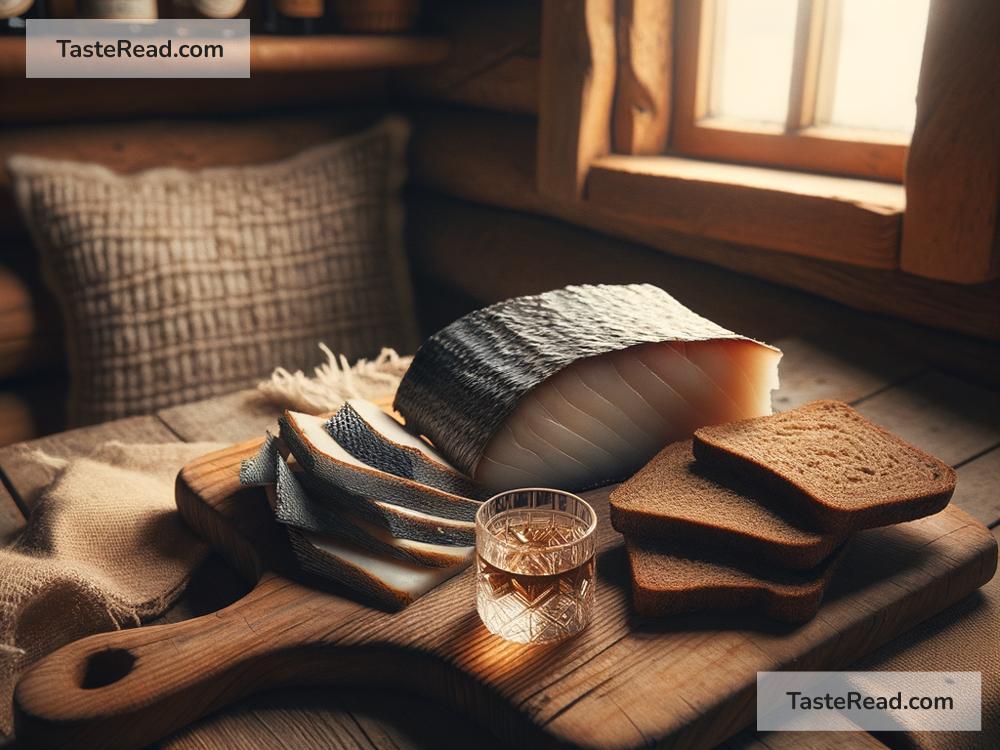The Significance of Fermented Shark (Hákarl) in Icelandic Culture
When you think of Iceland, images of stunning landscapes, glaciers, and volcanoes likely come to mind. However, Iceland is also known for its unique traditional foods, with fermented shark, known as hákarl (pronounced HOW-karl), standing out as one of the most famous—and sometimes infamous—dishes. This traditional food has deep roots in Iceland’s history and is a fascinating symbol of resilience, creativity, and cultural pride.
What is Hákarl?
Hákarl is a dish made from the meat of the Greenland shark. What makes it distinct from other types of fish is its preparation method. Greenland sharks contain high levels of toxins in their flesh, especially a substance called trimethylamine oxide, which makes the meat unsafe to eat when fresh. Early Icelanders found a way to make it edible by fermenting the shark meat and then drying it for several months.
The process begins with cleaning and gutting the shark, followed by burying it in gravel or sand-covered pits under heavy stones to squeeze out the fluids. After six to eight weeks, the shark is dug up and hung to dry for several months. When the fermentation and drying are complete, the meat is cut into small pieces. The result is hákarl—an intensely pungent, chewy dish with a strong ammonia smell.
Despite its strong odor and unique taste, hákarl is still enjoyed by many people in Iceland today. Tourists often see it as a challenge, and locals embrace it as a part of their heritage.
A History of Practicality and Resilience
The origins of hákarl date back to the harsh conditions early Icelanders faced. Iceland’s environment made survival a tough challenge. Winters were long and severe, and arable land was limited, so growing crops was difficult. Fish was therefore a vital resource for sustenance, and preserving food became crucial.
In a time before refrigeration, Icelanders had to be creative. The tradition of fermenting foods developed as a way to preserve fish and meat so they wouldn’t spoil. Fermenting shark was particularly useful because Greenland sharks are abundant in the cold waters around Iceland, yet their fresh meat is dangerous to eat due to its toxicity. By fermenting the meat, Icelanders were able to transform something that was once harmful into a valuable source of nutrition.
Hákarl isn’t just a food—it’s a testament to the ingenuity and resilience of Icelanders who learned to adapt to their environment and make the most of what they had.
A Cultural Symbol
For Icelanders, hákarl isn’t simply about survival; it’s also a way to honor their ancestors and connect with their cultural identity. The dish remains a reminder of Iceland’s history and how the people overcame challenges to thrive in a sometimes unforgiving environment.
Hákarl is also deeply tied to Icelandic celebrations, particularly Þorrablót (Thorrablot), a midwinter feast held to honor the old Norse gods and Icelandic traditions. During Þorrablót, a variety of preserved foods—and hákarl—is served alongside other dishes like smoked lamb, pickled fish, and rye bread.
Many Icelanders see hákarl as part of their heritage and a way to introduce younger generations to the ways their ancestors lived. Eating hákarl connects people to their roots and reminds them of Iceland’s unique cultural story.
A Flavor Unlike Any Other
For those unfamiliar with hákarl, the taste can be overwhelming. The fermentation process gives the meat a sharp, ammonia-like smell (similar to cleaning products), which often makes visitors hesitate before trying it. However, locals insist that the smell is much stronger than the actual flavor. Once you get past the initial scent, hákarl has a tangy, fishy taste and a chewy texture. Icelanders usually serve it in small bites, often paired with a shot of the traditional Icelandic spirit, brennivín, to wash it down.
While hákarl is a divisive food—even among Icelanders—most agree that it’s a dish you should try at least once. Tourists visiting Iceland are often encouraged to sample hákarl to experience an authentic part of Icelandic culture. It’s seen as a rite of passage, a chance to test your bravery, and a fun way to bond with locals.
Hákarl in Modern Iceland
In modern times, hákarl has moved away from being a staple survival food and is now considered more of a delicacy served on special occasions. Icelanders don’t eat it regularly, but they view it as an important connection to their past.
Tourists frequently encounter hákarl at restaurants and festivals, and thanks to its reputation as one of the world’s most unusual foods, it often sparks curiosity and conversation. Over the years, hákarl has gained a place in the global spotlight as an iconic Icelandic food that reflects the country’s traditions.
Final Thoughts
Hákarl might not be everyone’s idea of a delicious meal, but it holds incredible significance in Icelandic culture. It represents adaptability, ingenuity, and a deep respect for tradition. For Icelanders, hákarl is more than just food—it’s a living connection to their history and an expression of their identity.
If you ever visit Iceland, don’t be afraid to try hákarl. Whether you love it or just find it tolerable, tasting this unique dish is an opportunity to experience Icelandic culture in a memorable, authentic way.


